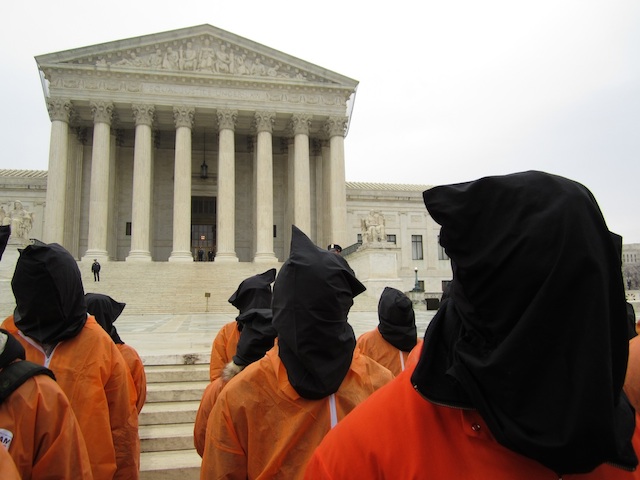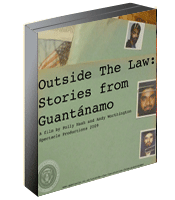Updated: My Definitive List of the Guantánamo Habeas Corpus Results
See the updated Guantánamo habeas list here.
Sometimes life takes us down unexpected routes, and yesterday, while looking for links for my last article, a transcript of a talk I gave in Los Angeles during my recent US tour calling for the closure of the prison at Guantánamo Bay on the 12th anniversary of its opening, I found myself visiting a page I first created in May 2010, entitled, “Guantánamo Habeas Results: The Definitive List.”
The page is a list of all the prisoners whose habeas corpus petitions were ruled on by judges in the District Court in Washington D.C. following the Supreme Court’s important ruling, in June 2008, in Boumediene v. Bush, granting the prisoners constitutionally guaranteed habeas corpus rights. At the time I created the list, there had been 47 rulings, and in 34 of those cases, after reviewing all the evidence, the judges concluded that the government had failed to demonstrate that they were connected in any meaningful manner with either al-Qaeda or the Taliban, an ordered their release.
This was humiliating for those who sought to defend Guantánamo, especially as the habeas hearings involved a low evidentiary hurdle — requiring the government to establish its case through a preponderance of the evidence rather than beyond any reasonable doubt. It was, moreover, a vindication for those like myself and some other journalists, as well as lawyers for the men, NGOs and others concerned by the existence of Guantánamo, like Lt. Col. Stephen Abraham, who had worked on the tribunals at Guantánamo, who had long maintained that the supposed evidence against the men was flimsy and untrustworthy, in large part because it was gathered using torture or other forms of coercion, or, in some cases at Guantánamo, because certain prisoners were bribed with better living conditions if they told lies about their fellow prisoners. Read the rest of this entry »
Judge Calls for An End to Unjust Provisions Governing Guantánamo Prisoners’ Habeas Corpus Petitions
 In preventing the release of prisoners from Guantánamo, all three branches of the US government are responsible. President Obama promised to close the prison within a year of taking office, but he lacked a concrete plan, and soon caved in to criticism, blocking a plan by White House counsel Greg Craig to bring some cleared prisoners who couldn’t be safely repatriated — the Uighurs, Muslims from China’s Xinjiang province — to live in the US, and imposing a ban on releasing all Yemenis after it was discovered that a failed plot to blow up a plane bound for the US on Christmas Day 2009 was hatched in Yemen.
In preventing the release of prisoners from Guantánamo, all three branches of the US government are responsible. President Obama promised to close the prison within a year of taking office, but he lacked a concrete plan, and soon caved in to criticism, blocking a plan by White House counsel Greg Craig to bring some cleared prisoners who couldn’t be safely repatriated — the Uighurs, Muslims from China’s Xinjiang province — to live in the US, and imposing a ban on releasing all Yemenis after it was discovered that a failed plot to blow up a plane bound for the US on Christmas Day 2009 was hatched in Yemen.
Congress, in turn, imposed ban on bringing prisoners to the US mainland, and, in the last two versions of the National Defense Authorization Act, a ban on releasing prisoners to any country where even a single released prisoner has allegedly engaged in recidivism (returning to the battlefield), and a requirement that, if a prisoner were to be released, the Secretary of Defense would have to certify that they would not be able, in future, to engage in any terrorist activities — a requirement that appears to be impossible to fulfill.
Largely overlooked has been the responsibility of the judiciary — and specifically, the Court of Appeals in Washington D.C. (the D.C. Circuit Court), and the Supreme Court, but their role in keeping men at Guantánamo is also crucial.
Nine years ago, in June 2004, in Rasul v. Bush, the Supreme Court granted the prisoners habeas corpus rights, a momentous ruling that pierced the veil of secrecy that had allowed the Bush administration to establish a torture regime at Guantánamo, and also allowed the prisoners to be represented by lawyers, who were allowed to visit them. Read the rest of this entry »













 Who's still at Guantánamo?
Who's still at Guantánamo?
